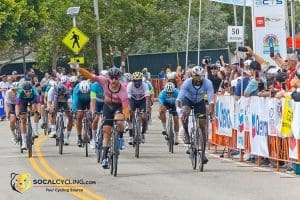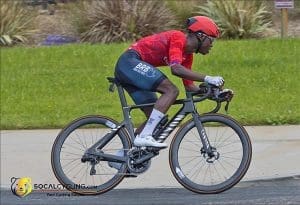In the last installment of Training Time, we discussed your Off-Season Break and Activities. In short, upon the end of your racing season (typically August-September in southern California), you should simply rest until your energy levels are up. When that is accomplished, it is time to do some cross-training and core strengthening activities to retain general aerobic fitness. Finally, depending on condition and goals, an athlete may begin a resistance training (weight lifting) program. So, you have taken a break, gone golfing, and done some running over the past five or six weeks. Now, you feel good and are ready to start your training for the 2007 season. So, what is next? What do you do from now until the first race of 2007?
The time you start training (after being physically and mentally recovered, of course) depends primarily on your current fitness and specific goals for the upcoming season. Typically, your training will begin with core strengthening and/or resistance training in October and will be coincided/followed with endurance and strength training in November.
Core Strengthening & Resistance Training
Core strengthening is vital to the competitive sport of cycling. However, our abdominals, obliques, and lower back muscles are some of the most neglected areas for many cyclists. Lack of core stability leads to those uncomfortable aches and pains in the back (among other areas) while you ride. You want to give the legs a stable platform upon which to generate power. I do four to five abdominal and back exercises using the body ball (a.k.a. yoga ball), three times per week to maintain core strength. You should continue to do core strengthening exercises throughout the racing season.
As for resistance training, October or November is usually the time to begin such training. There are diverse opinions among experts as to how much resistance training actually improves the performance of a cyclist. Generally, however, a properly executed resistance training program can increase overall and maximum strength, improve muscle tone and balance, and prevent future injuries. A resistance training program may be anywhere from 4 to 12 weeks, or even longer in certain circumstances. Generally, the program will entail starting at lower weight/higher repetitions and progress to lower repetitions/higher weight for lower body exercises. Less focus is put on upper body exercises which typically include less sets and are limited to lower weight with higher repetitions. Resistance training is a form of strength training in which a primary goal is to achieve maximum power. Later, during your on-the-bike base training, strength training (e.g. climbing) may pick up where the resistance training left off.
As to whether you personally would benefit from resistance training – every athlete is different. Some of my athletes are built like football players – having substantial muscle mass and high maximum power. If their weakness is aerobic power, then the best use of their time may be on the bike training. A second rider may have a manual labor job and maintain general strength that way. They too may be better off skipping visits to the gym. On the other hand, a third rider may have a good “engine” (aerobic system) but has limited maximum power and/or upper body strength. They would benefit more from some time in the gym. So, consult your coach, and decide what is best for you.
Base & Strength Training
During your pre-season (time between your “off season” and racing season), much of your training should target increasing your aerobic endurance (what we have come to know as “base training”). When we talk about “building up a base”, we are essentially talking about building up our aerobic capacity – our ability to take on larger workloads. You accomplish this with endurance (long sustained effort) rides and strength (climbing) workouts. The most effective program typically begins with several endurance rides. For me, this means a 4+ hour long ride at heart rate zone (HRZ) 2/Power Level (L) 2. Depending on rider abilities and experience, these rides will be from 2.5 to 6 hours. Additionally, the number of weeks a cyclist does these rides also depends on rider ability, experience, as well as his or her goals for the upcoming season.
Throughout base training is absolutely the time to do what I call “efficiency training”. You accomplish this with isolated leg, high cadence, and other similar drills. Many new cyclists can gain “free watts” (extra power) just by working on their pedal stroke and improving their efficiency. This is one place where training smarter and not harder is right on. Yeah, eventually you need to train hard to improve, but here is an “easy” way to gain an advantage over your competition.
When appropriate, total workout hours and intensity are increased. All workouts are still aerobic, but riders may do tempo efforts – somewhat harder than your typical endurance pace, but still at a level that a rider can continue for well over an hour. These can be done in the form of long intervals at increasing durations. This may also be a time to incorporate on-the-bike strength exercises to gain maximum force on the pedals. If a rider is resistance training, he or she needs to strategically coordinate those workouts with his or her on-the-bike workouts for maximum productivity. For some riders, this will be the time to begin riding in the hills.
Once a sufficient aerobic base is established, for many, it is time to put a substantial amount of time in the mountains. Climbing is a form of strength training and may take over where a resistance program left off. This is when I do my climbing threshold workouts (HRZ 4/L4), which significantly improves strength as well as power at and below threshold. Doing long hills or repeats on shorter ones, at the correct intensity, can substantially improve a rider’s aerobic abilities. These workouts, done with other strength workouts, are usually the final step of my base training. The workload is usually pretty high during this period. It is important, as in all stages of base training, to get appropriate rest during this training.
Finally is the issue of intensity training during the off/pre-season. My general rule is no intensity during the “off season” and a little intensity during the pre-season. The problem is that most riders can’t resist going on their Tuesday, Saturday, and Sunday group rides to try and tear the legs off their best friends. They end up tearing their own legs apart and are not able to successfully complete their aerobic workouts. Additionally, the cardiovascular system needs ample rest after a long racing season to fully recover. Nevertheless, a few hard group rides during this time of the year is okay, even good. It can help a rider carry over fitness to the next year. But they should be carefully implemented into the pre-season program. Personally, I do very few group rides during the off/pre-season and yet I seem to show up at the first race in fairly good condition. Case in point – as a Cat. 3 I was hit by a car in the the off season and after only doing base training, with no intensity whatsoever, I still managed to win the first race of the season. So, just try not to overdo the high intensity rides.
With proper base training, you can dramatically improve your performance come race day. Not only will you feel strong and have sufficient endurance to make it through the longer races, you will also substantially increase the amount of time you can hold your peak performance. Moreover, base training will prolong your racing season, and allow you to hit more of those races on the southern California racing calendar!
Dan Vinson is a certified USA Cycling Coach and a competitive Category 1 cyclist in southern California. For more information visit www.vinsonvelo.com or contact Dan at [email protected].
By Dan Vinson
No products found.










